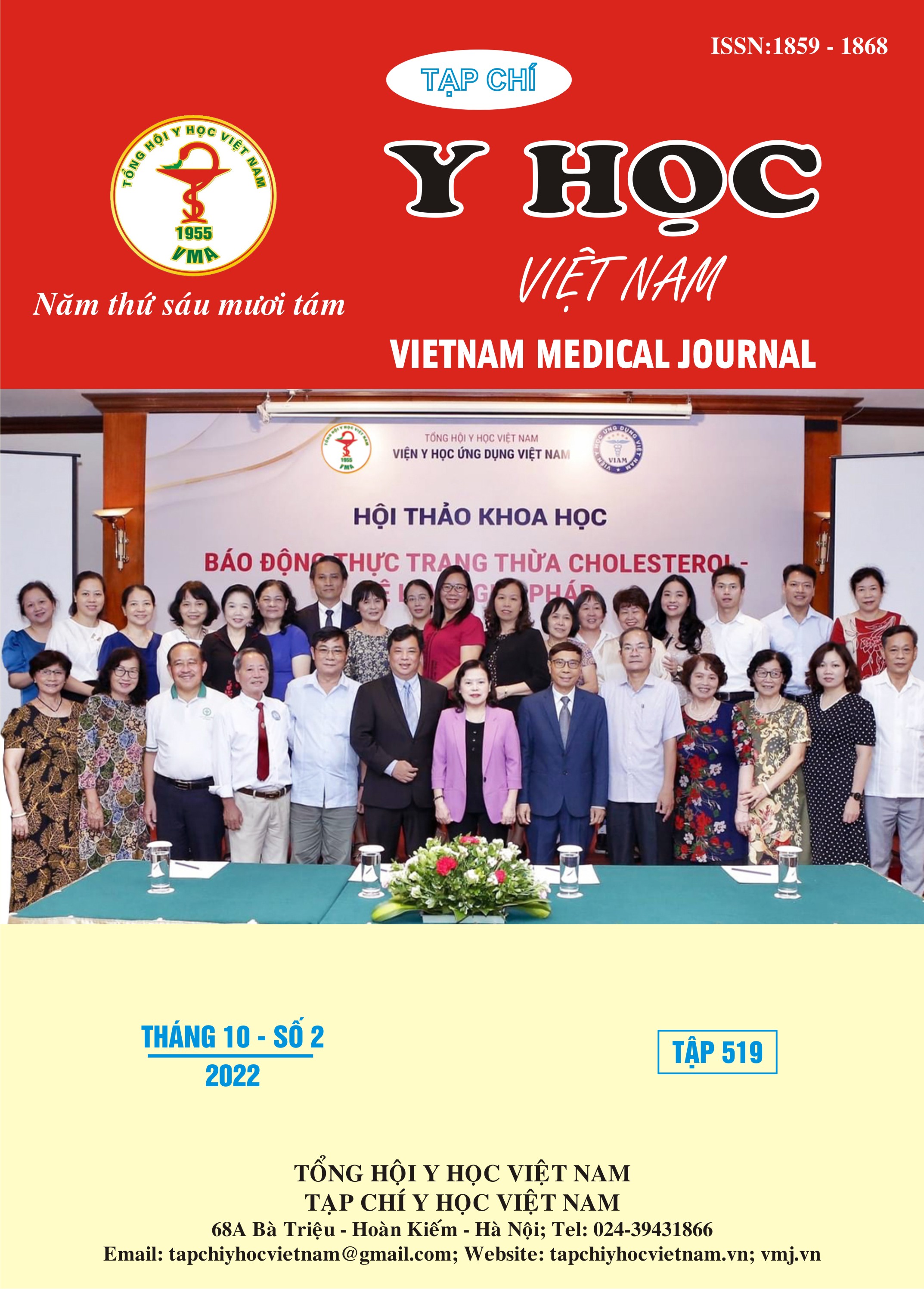ĐẶC ĐIỂM HÌNH ẢNH CỦA TỔN THƯƠNG VÚ NGẤM THUỐC KHÔNG TẠO KHỐI TRÊN CỘNG HƯỞNG TỪ: MỐI LIÊN QUAN VỚI KHẢ NĂNG ÁC TÍNH
Nội dung chính của bài viết
Tóm tắt
Mục đích: Phân tích đặc điểm hình ảnh của tổn thương vú ngấm thuốc không tạo khối (NME) ác tính trên cộng hưởng từ (CHT). Đối tượng và phương pháp nghiên cứu: Các bệnh nhân (BN) nghi ngờ ung thư vú (UTV), được chụp CHT trước phẫu thuật và có hình ảnh của tổn thương ngấm thuốc không tạo khối trên CHT, đã được sinh thiết kim và/hoặc phẫu thuật làm mô bệnh học (MBH), thời gian từ tháng 8 năm 2020 đến tháng 7 năm 2022 tại bệnh viện K. Xác định các đặc tính tổn thương ngấm thuốc không tạo khối trên CHT và đối chiếu với mô bệnh học: xác định độ nhạy (Se), độ đặc hiệu (Sp), giá trị dự đoán dương tính (PPV) được tính cho từng đặc điểm; xác định ngưỡng tối ưu cho chẩn đoán ung thư vú dựa trên đường cong ROC theo giá trị ADC. Kết quả: Nghiên cứu 48 tổn thương (48 BN) bao gồm 40 ác tính và 8 lành tính. Kết quả nghiên cứu thu được, tổn thương ngấm thuốc không tạo khối (NME) phân bố theo thuỳ có khả năng ác tính (p=0.048) với Se, Sp, PPV lần lượt là 57.5%, 87.5%, 95.8%, trong khi ngấm thuốc dạng đám nhẫn là đặc điểm gợi ý ác tính (p=0.017) với Se, Sp, PPV lần lượt là 62.5%, 87.5%, 96.1%. Khi kết hợp cả đặc điểm phân bố theo thuỳ và ngấm thuốc dạng đám nhẫn thì khả năng ác tính cao hơn đáng kể (p=0.039) với Se, Sp và PPV tương ứng là 66.67%, 100% và 100%. Đồ thị ngấm thuốc của NME không đáng tin cậy trong phân biệt tổn thương lành tính và ác tính (p>0.05). Phân tích đường cong ROC theo giá trị ADC ở dưới ngưỡng 1.33x10-3mm2/s gợi ý chẩn đoán ung thư vú (p=0.012) với Se, Sp, PPV và NPV tương ứng là 75%, 75%, 93.75% và 37.5%. Diện tích dưới đường cong (AUC) của giá trị ADC là 0.748. Kết luận: Tổn thương NME phân bố theo thuỳ, ngấm thuốc dạng đám nhẫn là các đặc điểm gợi ý ung thứ vú. Đồ thị ngấm thuốc của NME không đáng tin cậy trong phân biệt tổn thương vú lành tính và ác tính. Giá trị ADC có thể sử dụng trong phân biệt tổn thương vú NME lành tính và ác tính.
Chi tiết bài viết
Từ khóa
Ung thư vú, cộng hưởng từ, ngấm thuốc không tạo khối
Tài liệu tham khảo
2. Yang QX, Ji X, Feng LL, et al. Significant MRI indicators of malignancy for breast non-mass enhancement. XST. 2017;25(6):1033-1044. doi:10.3233/XST-17311
3. Uematsu T, Kasami M. High-spatial-resolution 3-T breast MRI of nonmasslike enhancement lesions: an analysis of their features as significant predictors of malignancy. AJR Am J Roentgenol. 2012;198(5):1223-1230. doi:10.2214/AJR.11.7350
4. Aydin H. The MRI characteristics of non-mass enhancement lesions of the breast: associations with malignancy. Br J Radiol. 2019;92(1096). doi:10.1259/bjr.20180464
5. Imamura T, Isomoto I, Sueyoshi E, et al. Diagnostic performance of ADC for Non-mass-like breast lesions on MR imaging. Magn Reson Med Sci. 2010;9(4):217-225. doi:10.2463/mrms.9.217
6. Liu G, Li Y, Chen SL, Chen Q. Non-mass enhancement breast lesions: MRI findings and associations with malignancy. Ann Transl Med. 2022;10(6):357. doi:10.21037/atm-22-503
7. Avendano D, Marino MA, Leithner D, et al. Limited role of DWI with apparent diffusion coefficient mapping in breast lesions presenting as non-mass enhancement on dynamic contrast-enhanced MRI. Breast Cancer Research. 2019;21(1):136. doi:10.1186/s13058-019-1208-y
8. Bickel H, Pinker K, Polanec S, et al. Diffusion-weighted imaging of breast lesions: Region-of-interest placement and different ADC parameters influence apparent diffusion coefficient values. Eur Radiol. 2017;27(5):1883-1892. doi:10.1007/ s00330-016-4564-3.


